
Number of accepted Lazuli Bunting records for Louisiana = 11

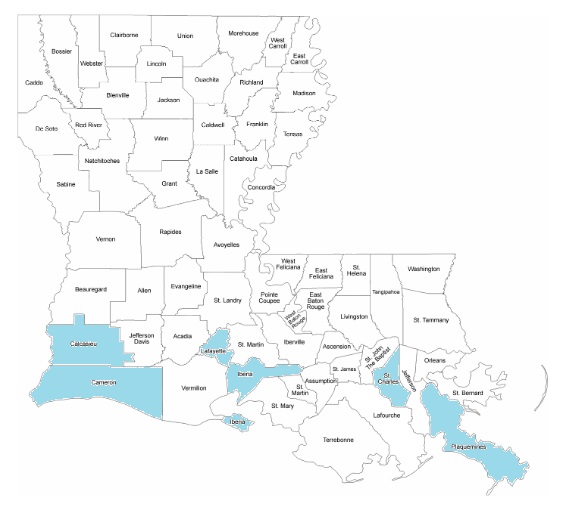
One male (97-19) from 30 Apr.-3 May 1997, Calcasieu: 5 mi. W of Sulphur on Choupique Rd.; Phillip A. Wallace, Matt Pontiff (ph only), found by Leonard East (FN 51(4):883, includes ph by Pontiff; LOS 159). This represents the second accepted record for Louisiana and the first spring record.
One female-plumaged bird (2000-40) on 3 Nov 2000, Plaquemines: Pilottown; David P. Muth (ph); NAB55(1):65.
One or two adult males (01-8) on 3-5 Feb 2001, St. Charles: Luling, 1977 Primrose
Lane (residence of Matt Touchard); John P. Sevenair and M. Mark Swan (ph taken 5
Feb). Reportedly present starting 16 Jan (fide Swan; NAB 55(2): 182), but the only
documentation on file is for 3-5 Feb.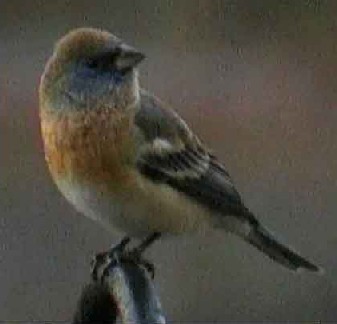
Photo by Mark Swan
One adult male (2003-07) on 26 Jan 2003, St. Charles: Luling (residence of Matt Touchard); Charles E. Lyon and Matt Touchard (ph only); NAB57(2):215.
One adult male in non-breeding plumage (2004-030) on 7 February 2004, St. Charles: Luling, Mimosa
Park subdivision, residence of Matt Touchard;
B. Mac Myers III (ph). Reported by homeowner to be
present since mid-January. Accepted record 2003-007 is at this site during the previous winter.
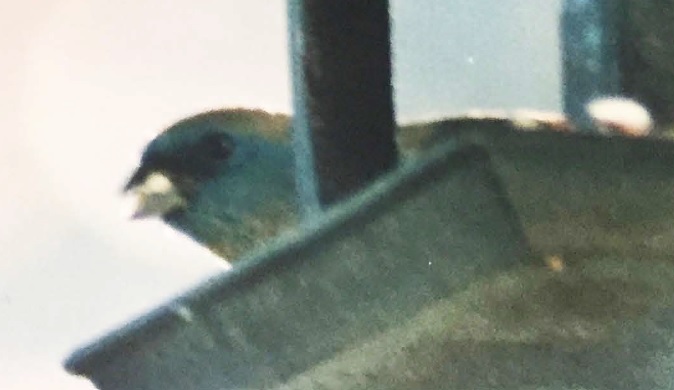
Photo by B. Mac Myers III
One adult male (2006-54) on 9 Dec 2006, St. Charles: Luling (residence of Matt Touchard);
Rosemary Seidler
(ph); NAB61(2):282. This and the preceding record presumably pertain to the
same wintering male returning since winter 2000-2001 (see also LBRC record no. 2001-8 above).
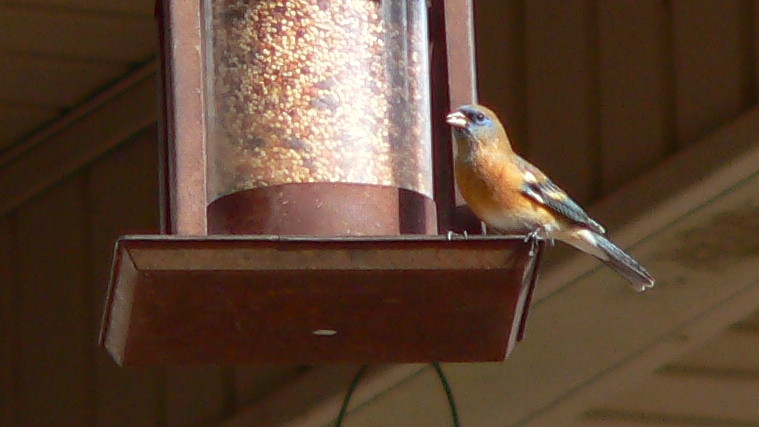
Photo by Rosemary Seidler
One definitive basic male (2007-07) from 8-9 Jan 2007, Iberia: New Iberia, 1621 Southwood
Drive;
Michael J. Musumeche
(ph); NAB61(2):282.
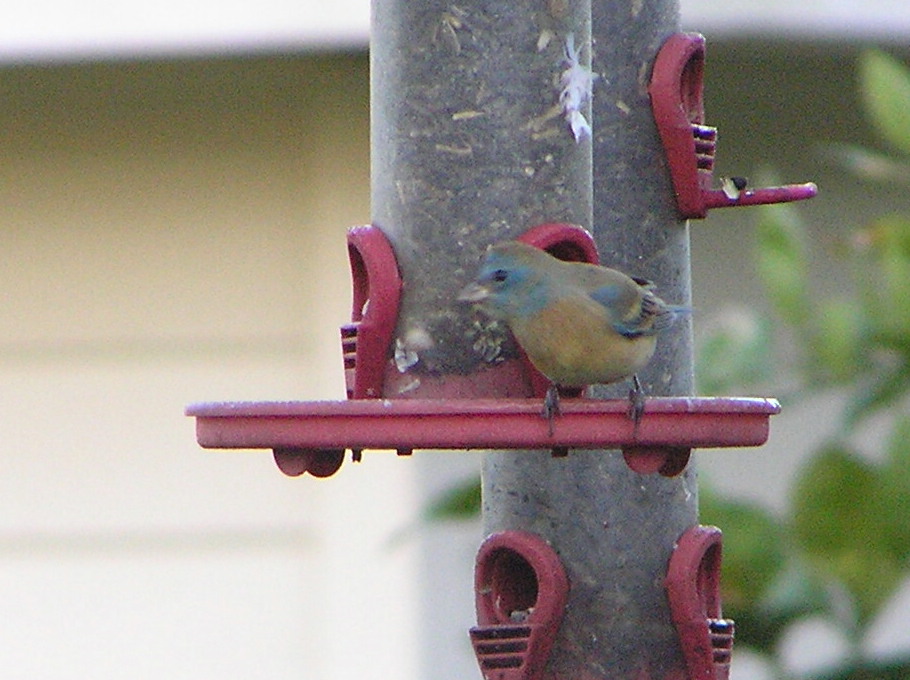
Photo by Michael J. Musumeche
One adult male (2010-48) banded on 26 April
2010, Cameron: Johnson�s Bayou;
T. J. Zenzal
(ph).
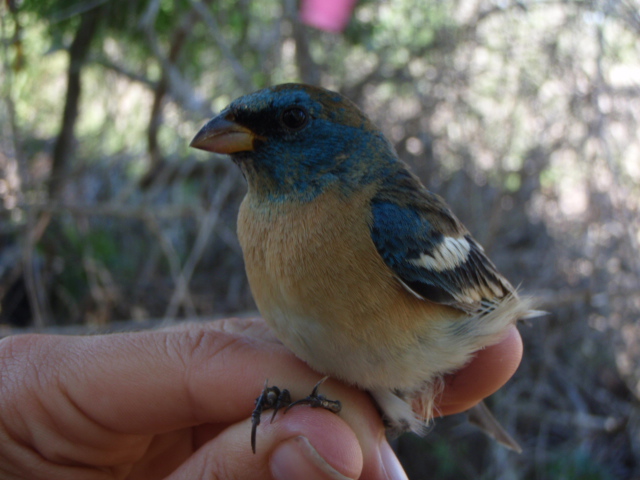
Photo by T. J. Zenzal
One adult in basic plumage male (2014-014) on 17-21 February 2014, Lafayette: 2.5 mi. WSW Youngsville, private
residence near Savoy X Verot rds. at Larive-Rowland residence;
Erik I. Johnson and
Dave Patton
(ph).
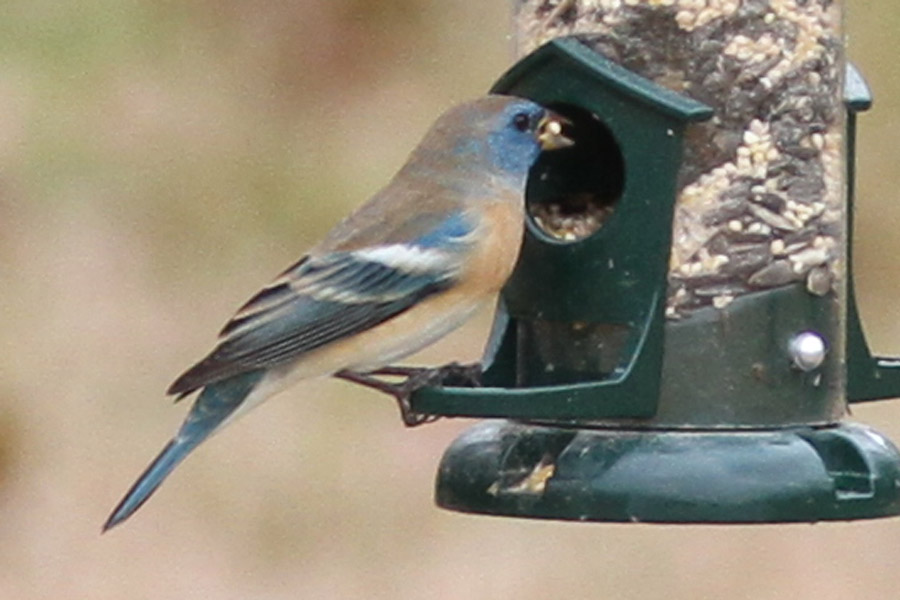
Photo by Dave Patton
One adult male (2014-060) on 30 April 2014, Cameron: Peveto Woods Sanctuary;
Cameron Rutt
(ph).
Photo by Cameron Rutt
One adult male (1996-39) on 21-23 Apr 1996, Claiborne: Haynesville. Although the brief description was rather compelling, an inexperienced observer submitted the record, and the description was not detailed enough to eliminate the possibility of a hybrid. Unfortunately, supporting photographs were not obtained, and the Committee was reluctant to accept what would have been at the time only the second Louisiana record and the first spring record.
One female (2000-39) on 30 Oct 2000, St. Tammany: Mandeville lakefront near Sunset Point. Although the bird was noted as having white wing bars, the breast was described as being �bright gray.� Unfortunately the bird could not be relocated and photographed. During the second circulation, five members voted not to accept based primarily on breast coloration, which was interpreted as inconsistent with this species. Two members further suggested that the anomalous characters might indicate a hybrid.
One adult male (2003-051) on18 May 2003, St. Tammany: Slidell, Ruby's Natural Foods, 1260-1336 Hwy. 190. All Members agreed that the circumstances of the observation and description did not warrant acceptance of a potential the fifth state occurrence.
One breeding plumage male (2010-120) on 25 April 2010, Cameron: BRAS Peveto Woods Sanctuary. This observation was relatively brief and although very suggestive of an adult male Lazuli, which is very distinctive, those members who voted not to accept emphasized the brevity of the observation and that because this species is known to hybridize with Indigo Bunting, there was not enough descriptive detail or discussion to eliminate a hybrid.
One female-type (2001-056) on 14 December 2001, Jefferson Davis: Roche Road. All Members agreed that the combination of brief views and relative difficulty of identification of the species did not warrant acceptance.
One adult male (2006-013) on 28 April 2006, Caddo: Shreveport, Stoner Boat Launch on Red River. Although the general description was fairly good, this would have represented only the 6th accepted state occurrence and dissenting Members were concerned with the brevity of the observation and that a hybrid could not be eliminated under the circumstances.
One adult male Lazuli x Indigo Bunting (Passerina amoena X P. cyanea)(2018-091) on 18 April 2018, Cameron: Grand Chenier (photo). This was apparently the first report of this hybrid combination for Louisiana and was primarily based on the presence of a single white wing bar. Ultimately, only two Members were convinced it represented a hybrid. Dissenting Members were concerned that only one photo was submitted (showing only one side of the bird) and that there was no description or analysis.
One male (2020-020) on 26 April 2020, Caddo: 10455 Ellerbe Rd., south of Shreveport (ph). An interesting record that would have represented just the 12th Louisiana occurrence and only the 3rd for spring. This record went to a Discussion Round vote. Of greatest concern to some Members was the inconsistency between the very poor cell phone photos and the description. Members voting to accept believed the written account should carry more weight than the photos because the photos were insufficient to resolve whether hybrid characters were present, and that hybrids were specifically addressed by the observer in the report. Those voting not to accept believed that the photos suggested a hybrid based on the lack of obvious rusty chest, distribution of blue on the chest and flanks, and the hue of the blue. Surprisingly, there are no documented Indigo X Lazuli hybrids from Louisiana: a recent record (20118-091; 23rd Report of the LBRC) supported by a single photo was not accepted.